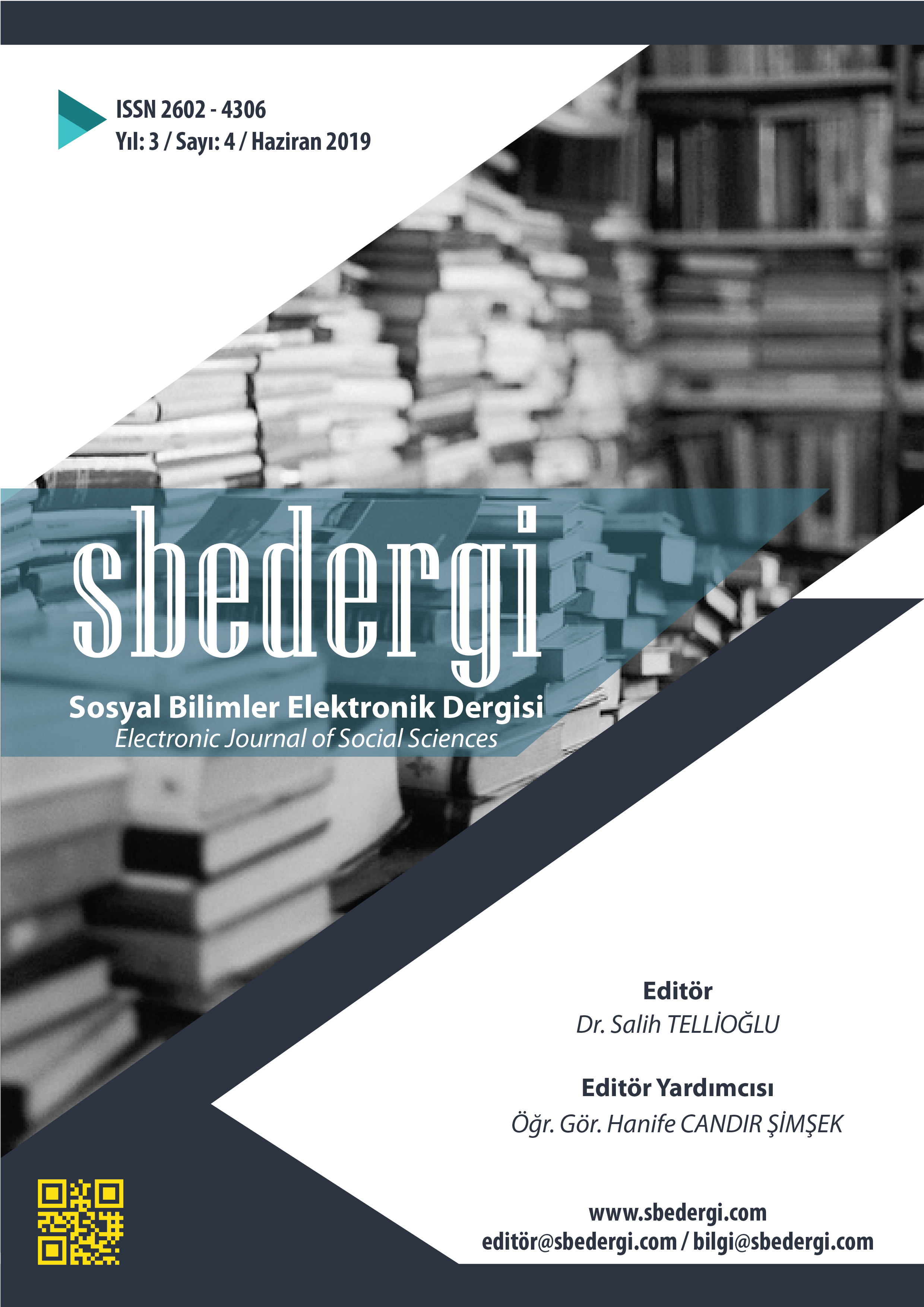2008 KÜRESEL FİNANSAL KRİZİ: KRİZDE BAŞROLÜ OYNAYAN KURUMLAR, DÜNYA FİNANSAL PİYASALARINA ETKİLERİ VE 1929 KRİZİ İLE KARŞILAŞTIRILMASI
Author :
Abstract
2008 finansal krizi çağdaş kapitalizmin finansallaşmasının bir sonucu olarak hem ekonomik hem de sosyal düzeyde ülkelere küresel boyutta büyük zararlar vermiştir. 2008 küresel finansal krizi, ölçeğinin büyüklüğü ve küresel boyutta yaptığı etkiden dolayı kriz literatüründe önemli bir yere sahiptir. ABD’de 2008 yılında konut piyasalarında geri dönmeyen kredilerden kaynaklı başlayan finansal kriz başta Avrupa ülkeleri olmak üzere küresel çapta büyük bir yayılım göstermiştir. Bu çalışma kapsamında 2008 finansal krizine etki eden faktörler, krizin çıkış süreci, dünya finansal piyasalarına etkisi değerlendirilmiştir. Ayrıca 2008 finansal krizinin etkisinin daha iyi açıklanabilmesi için 2008 krizi ve 1929 büyük buhranı karşılaştırılarak benzerlikleri ve farklılıkları ortaya konmuştur. Finansal Kriz, Büyük Buhran, 2008 Krizi
Keywords
Abstract
As a result of the financialization of contemporary capitalism, the 2008 financial crisis has caused great damage to countries at both the economic and social levels. The global financial crisis of 2008 has an important place in the crisis literature due to its size and its global impact. The financial crisis, which started in 2008 in the US in non-performing loans in housing markets, has shown a great spread in Europe, especially in European countries. In this study, the factors affecting the financial crisis of 2008, the outflow of the crisis, the impact on the world financial markets were evaluated. In addition, in order to explain the impact of the 2008 financial crisis, the similarities and differences between the 2008 crisis and the Great Depression of 1929 were compared.
Keywords
- Aiginger. K. (2010). The Great Recession versus the Great Depression: Stylized Facts on Siblings That Were Given Different Foster Parents. Economics. 10, 1-25.
- Aizenman,J., Jinjarak, Y., Estrada, G. ve Tian, S. (2018). Flexibility of adjustment to shocks: economic growth and volatility of middle-ıncome countries before and after the global financial crisis of 2008. Emerging Markets Finance & Trade, 54, 1112-1131.
- Albers. T., N., H. ( 2018). The prelude and global impact of the Great Depression: Evidence from a new macroeconomic dataset. Explorations in Economic History. 70, 150–163.
- Bosworth, B. and Flaaen, A. (2009). Financial crisis American style. Asian Economic Papers. 8(3), 146-170.
- Coffee, J.C. (2009). What Went Wrong? An Inıtıal Inquıry Into The Causes Of The 2008 Fınancıal Crısıs. Journal of Corporate Law Studies, 9(1), 1-22.
- Docking, D.,S. (2011). The 2008 financial crises and implications of the Dodd-Frank Act. Joumal of Corporate Treasury Management. 4(4), 353-363
- Duraskovic. J. (2014). The Global Economic Crisis through the prism of the Great Depression. Management. 71, 39-47.
- Erkens. D., H., Hung. M. ve Matos. P. (2012). Corporate governance in the 2007–2008 financial crisis: Evidence from financial institutions worldwide. Journal of Corporate Finance, 18, 389-411.
- Foo. J. (2017). A comparison of global financial market recovery after the 2008 global financial crisis. Folia Oeconomica Stetinensia. 109-128.
- Gagnon. M., H. Ve Gimet. C. (2013). The impacts of standard monetary and budgetary policies on liquidity and financial markets: International evidence from the credit freeze crisis. Journal of Banking & Finance 37, 4599–4614.
- Işık. N. ve Duman. E. (2012). Reel ve finansal göstergeler açısından 1929 ekonomik buhranı ve 2008 küresel krizi: karşılaştırmalı bir analiz. Yönetim ve ekonomi, 19(2), 239-260.
- Ivashina. V. ve Scharfstein. D. (2010). Bank lending during the financial crisis of 2008. Journal of Financial Economics, 97, 319-338.
- Jawadi. F. ve Arouri. M., H. (2011). The current international financial crisis in 10 questions: some lessons. Applied Economics Letters, 18, 279–283.
- King. M., R. (2019). Time to buy or just buying time? Lessons from October 2008 for thecross-border bailout of banks. The Journal of Financial Stability. https://doi.org/10.1016/j.jfs.2019.03.003
- Kucerova, Z. (2010). The impact of financial crisis on financial supervision in the EU, the USA and the Czech Republic. Bulletin of the Transilvania University of Braşov, 3 (52). 271-280.
- Lopatta. K. ve Kaspereit. T. (2014). The world capital markets’ perception of sustainability and the impact of the financial crisis. J Bus Ethics, 122, 475–500.
- Lupan. M. (2012). Great depression vs. the current financial and economic crisis. The USV Annals of Economics and Public Administration. 12,(2). 27-35.
- Majid. M., S., A. ve Kassim. S., H. (2007). Impact of the 2007 US financial crisis on the emerging equity markets. International Journal of Emerging Markets. 4(4), 341-357.
- Peicuti. C. (2014). The Great Depression and the Great Recession: A comparative analysis of their analogies. The European Journal of Comparative Economics.
- Sikka. P. (2009). Financial crisis and the silence of the auditors. Accounting, Organizations and Society,34, 868-873.
- Tavlas. G. S. (2016). New perspectives on the great depression: A review essay. International Finance. 19(3), 353–374.





